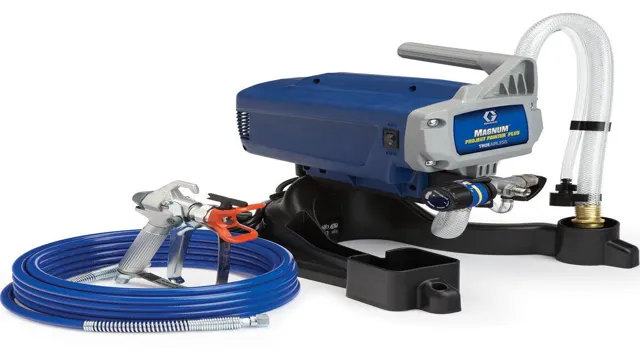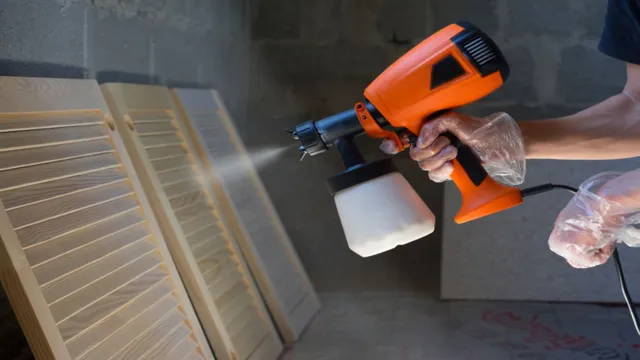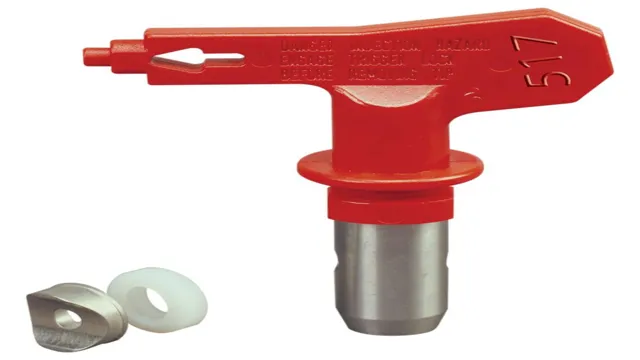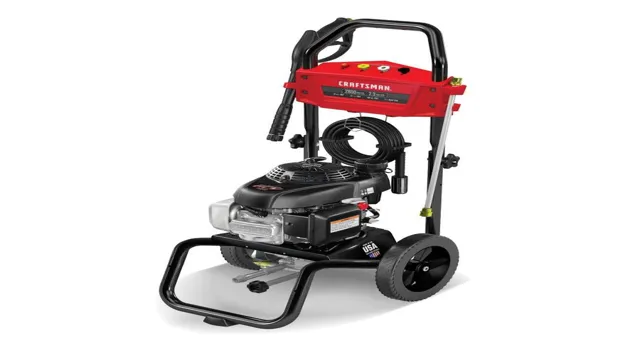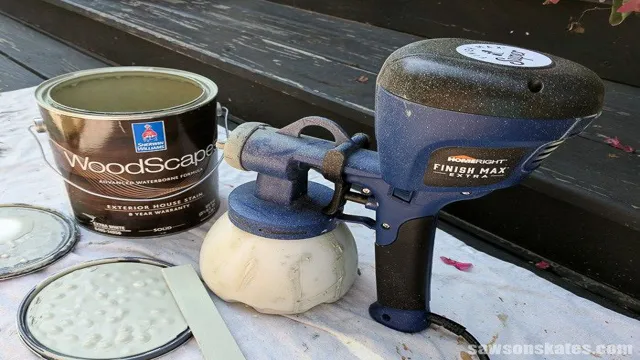Does an Airless Paint Sprayer Need a Compressor? Find Out Now!
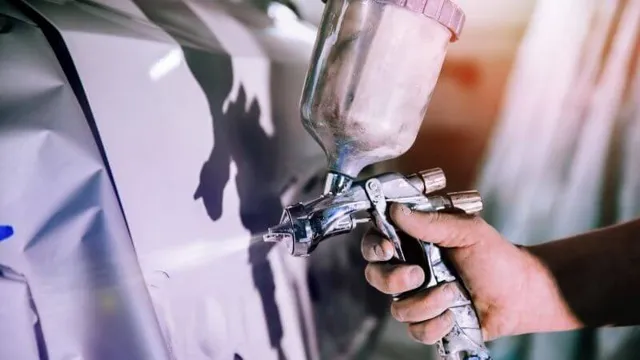
When it comes to painting, one of the most important things you need to consider is the kind of equipment you’ll be using. Airless paint sprayers are becoming increasingly popular due to their speed and efficiency. But if you’re new to the world of airless paint sprayers, you might be wondering whether or not they require compressors.
After all, compressors are often a crucial component of traditional paint sprayer setups. The short answer is no, airless paint sprayers do not need compressors. In fact, that’s one of the main reasons people choose to use them in the first place.
With an airless paint sprayer, the paint is pressurized mechanically rather than with the use of compressed air. This means that you don’t need a separate compressor or air supply in order to use the sprayer. Of course, there are other considerations to keep in mind when choosing an airless paint sprayer, such as the size and power of the motor, the tip size, and the type of paint you’ll be using.
But if you’re specifically trying to decide whether or not you need a compressor, you can rest assured that an airless paint sprayer will work just fine without one. In this blog, we’ll go over the ins and outs of airless paint sprayers, including what they are, how they work, and some of the benefits of using them. We’ll also address some common misconceptions and answer some frequently asked questions.
By the end of this article, you’ll have a much better understanding of airless paint sprayers and whether or not they’re the right choice for your painting needs. So, let’s dive in!
Understanding Airless Paint Sprayers
If you’re looking to tackle a painting project, you might be wondering whether an airless paint sprayer needs a compressor. The answer is no, it does not. The purpose of a compressor is to compress air to power a paint gun, allowing it to spray the paint.
However, airless paint sprayers work differently. Instead, they use a powerful motor to push paint through a nozzle at high pressure, creating a fine mist that evenly coats surfaces. This means that an airless paint sprayer offers a number of advantages, including a faster application process, a more even coat, and less overspray.
Of course, there are still some important factors to consider when using an airless paint sprayer, such as choosing the right nozzle and keeping the gun at the correct distance from the surface. With a little bit of practice, however, you’ll be able to achieve professional-quality results in no time.
Definition of Airless Painting Technology
Airless paint sprayers are a type of painting technology that operates by pumping paint through a high-pressure nozzle. This produces a fine mist that can be sprayed onto surfaces evenly and quickly, without the need for air compressors or other external equipment. Unlike traditional spray guns, which rely on compressed air to atomize paint particles, airless sprayers use hydraulic pressure to atomize paint.
This means they are capable of propelling paint at much higher speeds, allowing them to cover large areas quickly and efficiently. With an airless paint sprayer, you can achieve a smooth finish without the need for multiple coats. This technology is especially useful for painting large surfaces such as walls, ceilings, and exteriors, where speed and precision are essential.
However, it’s important to use the right tips, filters, and pressure settings to ensure proper atomization, coverage, and safety. With the right setup, airless paint sprayers can be a powerful tool for any DIY or professional painter looking to save time and achieve top-quality results.
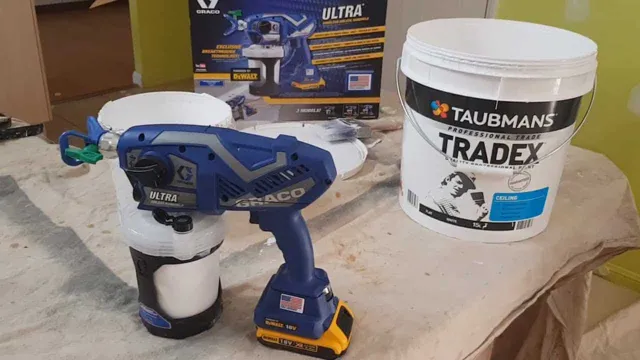
Types of Airless Paint Sprayers
Airless paint sprayers are an essential tool for anyone who wants to achieve a professional-looking paint job. There are different types of airless paint sprayers available on the market, each designed to meet different needs. One of the most common types is the handheld airless paint sprayer, which is lightweight and easy to use.
This type of sprayer is best for small to medium-sized painting projects, such as furniture or cabinetry. Another type of airless paint sprayer is the stand-mounted sprayer, which is ideal for larger projects, such as ceilings or exterior walls. This type of sprayer typically comes with wheels, making it easy to move around.
Lastly, there is the cart-mounted airless paint sprayer, which is the most powerful and versatile type. It allows for continuous spraying and can handle the largest painting projects. No matter what type of airless paint sprayer you choose, it is important to read the manufacturer’s instructions carefully and use the appropriate safety gear when spraying.
With the right sprayer and technique, you can achieve a flawless paint finish every time.
Difference Between Airless and Compressed Air Sprayers
If you’re new to the world of painting, it can be confusing to differentiate between airless and compressed air sprayers. The biggest difference between the two is that an airless paint sprayer doesn’t need a compressor to function properly. While compressed air sprayers work by compressing air through a hose and nozzle to atomize the paint, airless sprayers use a powerful pump to force the paint through a small opening in the sprayer’s tip.
This creates a high-pressure spray that can evenly distribute paint over large surfaces and into tight spaces. Although airless sprayers can be more expensive than compressed air sprayers, they offer a faster, more efficient painting experience that’s perfect for larger projects and professional use. Overall, deciding between an airless and compressed air sprayer depends on your specific needs and preferences.
But, if you want to skip the compressor without sacrificing quality, an airless paint sprayer might be the perfect option for you.
How Airless Sprayers Work
Airless sprayers work by pumping paint or coating material at a high pressure through a small nozzle to create a fine mist that evenly covers a surface. Unlike compressed air sprayers, which use compressed air to atomize the coating material, airless sprayers use hydraulic pressure to create the atomization. This means that airless sprayers are able to apply thicker coatings at a faster rate with less overspray.
Additionally, airless sprayers are able to handle higher viscosity coatings, such as latex paint, without the need for thinning. However, airless sprayers can be a bit more difficult to operate due to the high pressure involved, and they can sometimes result in a texture that is different from what is achieved by using a compressed air sprayer. Ultimately, the choice between an airless sprayer and a compressed air sprayer depends on the specific needs of the project at hand.
How Compressed Air Sprayers Work
If you’re looking to invest in a sprayer for your painting needs, it’s important to understand the difference between airless and compressed air sprayers. Airless sprayers work by using hydraulic pressure to force paint out of the sprayer through a small nozzle. Compressed air sprayers, on the other hand, use a compressor to pressurize the air in the sprayer’s tank, which then pushes the paint out of the nozzle.
The benefit of compressed air sprayers is their ability to produce a fine, even mist that covers surfaces seamlessly. However, they do require regular maintenance, such as proper cleaning and oiling of the compressor, to work effectively. Ultimately, the choice between airless and compressed air sprayers depends on your specific needs and preferences.
Pros and Cons of Airless Paint Sprayers
Airless paint sprayers have become increasingly popular for both homeowners and professional painters. They offer numerous advantages to traditional compressed air sprayers. One key difference between the two is the way that paint is delivered.
Airless paint sprayers use high-pressure pumps to force paint through a small nozzle, while compressed air sprayers use an air compressor to atomize the paint into smaller particles. This results in a more controlled and precise spray when using airless paint sprayers. Additionally, airless sprayers can produce thicker coatings and cover large areas quickly.
However, they can be more difficult to clean and maintain, and the high pressure can cause overspray, meaning that painters may need more masking and covering to avoid messes. Overall, airless paint sprayers are versatile and efficient tools that have revolutionized the painting industry.
Do Airless Paint Sprayers Need Compressors?
Airless paint sprayers do not require compressors to operate, unlike traditional spray guns. Instead, they use a motorized pump to expel the paint from the nozzle. This makes airless sprayers more convenient since they are less noisy, and there is no need to purchase or maintain a compressor.
Additionally, airless sprayers are ideal for large projects since they are faster and can handle thicker paints, including latex. Moreover, airless sprayers provide a smoother finish and reduce overspray, which ultimately leads to a more even and cleaner job. Overall, an airless paint sprayer is a cost-effective and efficient solution for any painter.
So, if you are looking to tackle a big painting project, an airless sprayer is an excellent investment for your toolkit.
Why Airless Paint Sprayers Don’t Need Compressors
Airless paint sprayers are a great choice for painting large areas quickly and efficiently. The best part of these sprayers is that they don’t require compressors to operate. Compressors can be bulky and difficult to move, and they can also add a lot of noise to the work environment.
With airless paint sprayers, the paint is forced out of the nozzle at high pressure, creating a fine spray that covers large areas with ease. The pressure comes from a hydraulic pump, which is powered by electricity or gas. The lack of a compressor makes these sprayers more portable and easier to use, while still delivering high-quality results.
Overall, airless paint sprayers provide a more convenient and efficient alternative to traditional paint methods, especially when it comes to large-scale projects.
When to Use Compressed Air Sprayers Instead
Airless paint sprayers provide a convenient and efficient option for painting large surfaces, without the need for a compressor. Airless sprayers utilize high-pressure pumps to atomize the paint, which is then sprayed onto the surface in a fine mist. This makes it an ideal choice for painting walls, ceilings, and other large areas.
The advantage of using airless sprayers instead of compressed air sprayers is that they provide a more consistent and even finish. They also require less thinning of the paint, which saves time and reduces messy cleanup. Additionally, airless sprayers can handle thicker coatings like latex paint with ease.
So, if you’re looking for a convenient, efficient, and easy-to-use option for painting large surfaces, an airless paint sprayer may be the right choice for your needs.
Conclusion
To compress or not to compress, that is the question when it comes to airless paint sprayers. But fear not, for the answer is simple: an airless paint sprayer does not require a compressor. Instead, these sprayers harness the power of high-pressure technology to atomize paint without the need for additional equipment.
So, forget about compressors and say hello to perfect paint jobs with just the touch of a button. And if anyone asks, just tell them that with an airless paint sprayer, you have all the air you need (minus the compressor).
FAQs
What is an airless paint sprayer?
An airless paint sprayer is a tool that uses high pressure to atomize and spray paint without the need for compressed air.
How does an airless paint sprayer work?
An airless paint sprayer pumps paint at high pressure through a nozzle to produce a fine mist that can be sprayed evenly onto a surface.
Can I use an airless paint sprayer without a compressor?
Yes, an airless paint sprayer does not require a compressor as it uses its own motor to create the necessary pressure to spray paint.
What are the advantages of using an airless paint sprayer?
Airless paint sprayers offer faster application time, consistent coverage, and reduced overspray compared to traditional brush and roller methods.
What types of paint can I use with an airless paint sprayer?
Airless paint sprayers can typically handle a variety of paint types including latex, enamels, stains, and lacquers.
How do I clean an airless paint sprayer?
Cleaning an airless paint sprayer involves running clean water or solvent through the sprayer to remove any remaining paint and prevent clogging.
Are airless paint sprayers suitable for both indoor and outdoor use?
Yes, airless paint sprayers can be used for both interior and exterior painting projects, making them a versatile tool for any job.

